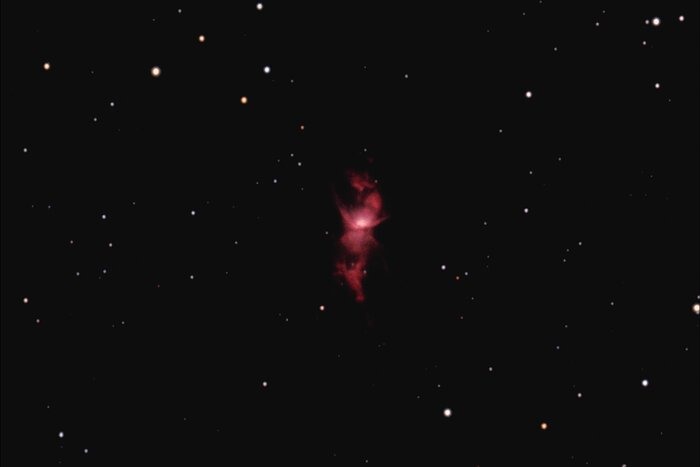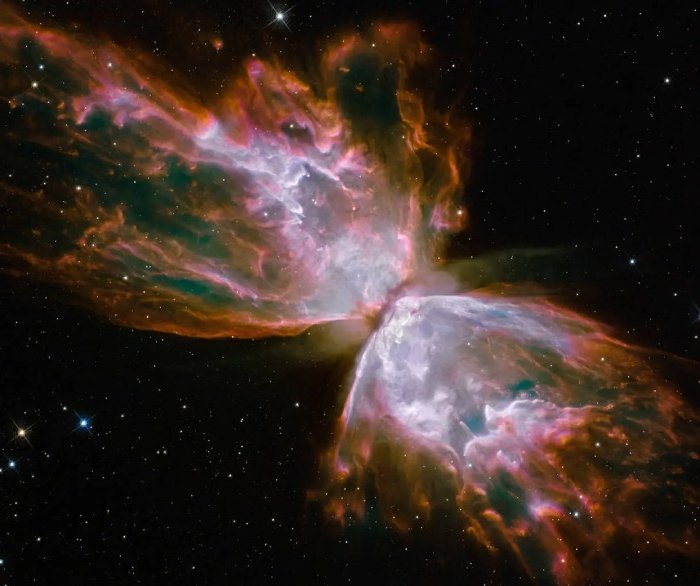NGC 6302, commonly referred to as the Butterfly or Bug Nebula, is a stunning planetary nebula situated in the southern portion of the constellation Scorpius, close to the boundary with Ophiuchus. It is located roughly 3,800 light-years from Earth
Discovered by the English astronomer John Herschel in 1836, NGC 6302 is renowned for its unique shape and vibrant colors, making it a favorite among both amateur astronomers and professional researchers. Here’s an overview of this celestial object:
Appearance
The Butterfly Nebula is one of the most visually stunning planetary nebulae in the night sky. Its distinctive shape resembles that of a butterfly or a celestial bug, hence its alternative names. The nebula exhibits intricate structures, including two lobes of gas and dust extending from a central region, giving it a butterfly-like appearance.
The nebula spans over 3 light-years across, and covers a relatively large area of the sky, with its two lobes extending over several arcminutes.

Composition
Similar to other planetary nebulae, NGC 6302 is predominantly composed of ionized gas, primarily hydrogen and helium, which is illuminated by the intense ultraviolet radiation from its central star. This star is among the hottest known, with surface temperatures exceeding 200,000 degrees Celsius.
The high temperature contributes to the nebula’s striking appearance and plays a crucial role in the ionization process that gives it its vibrant colors. The nebula also contains dust grains and trace amounts of heavier elements, including carbon, nitrogen, and oxygen, created during the star’s previous stages of evolution.
Formation
NGC 6302 formed as a result of the death throes of a Sun-like star. As the star reached the end of its life, it shed its outer layers of gas and dust, creating a expanding shell of material known as a planetary nebula. The central star is now in the process of evolving into a white dwarf, while the nebula continues to expand into space.
Observation
The Butterfly Nebula is best observed using telescopes with moderate to high magnification, ideally under dark sky conditions. It can also be viewed with large-aperture binoculars.
The optimal time for observing NGC 6302 in the Southern Hemisphere is during the winter months, specifically from June to August. During this period, the constellation Scorpius rises in the eastern sky in the evening and remains visible throughout the night, reaching its highest point around midnight local time. These months provide excellent conditions for observing this nebula and other celestial objects within the constellation

Photographing NGC 6302 requires long-exposure astrophotography techniques to capture its faint nebulosity and intricate details. DSLR cameras or dedicated astrophotography cameras mounted on telescopes can produce stunning images of this beautiful planetary nebula.



